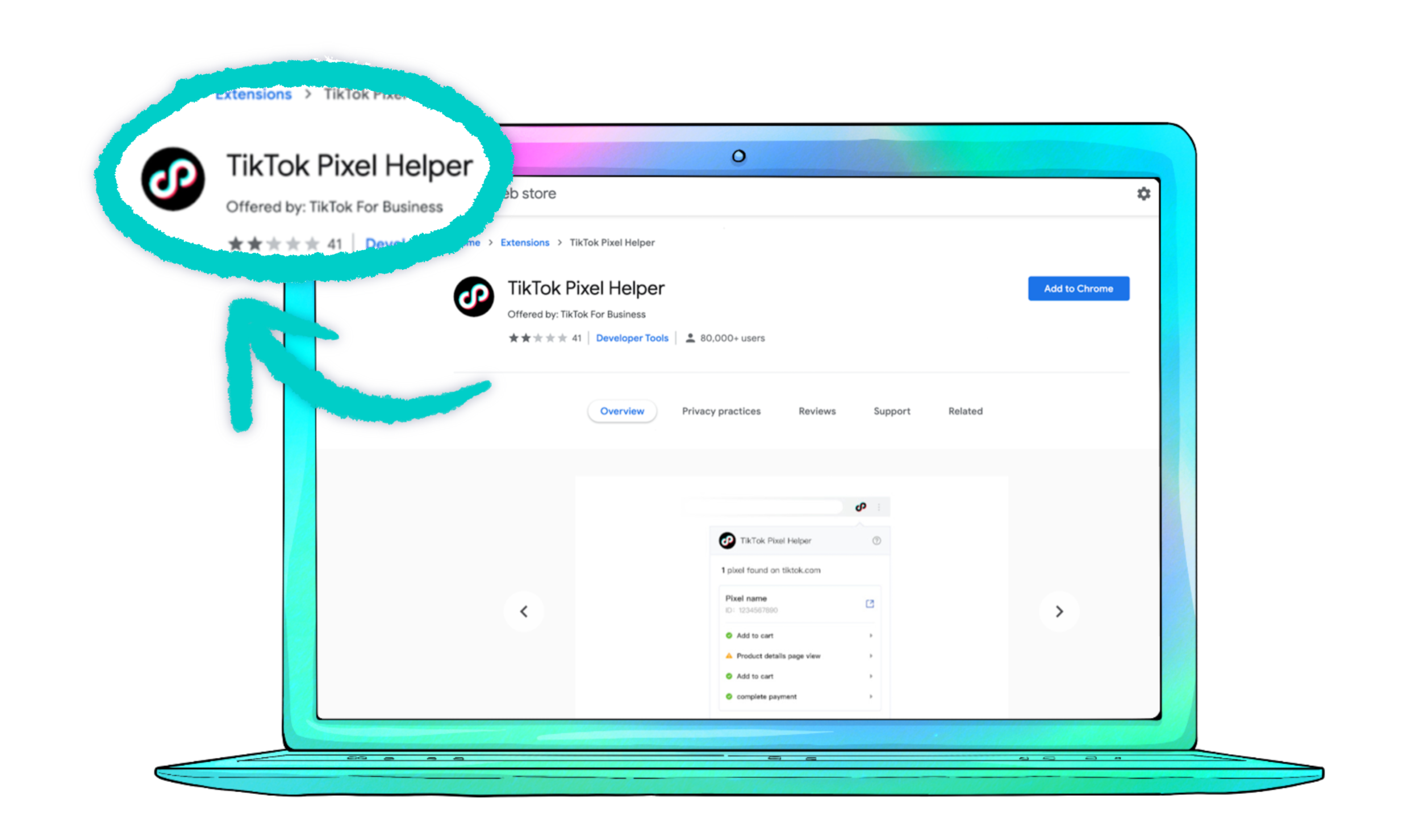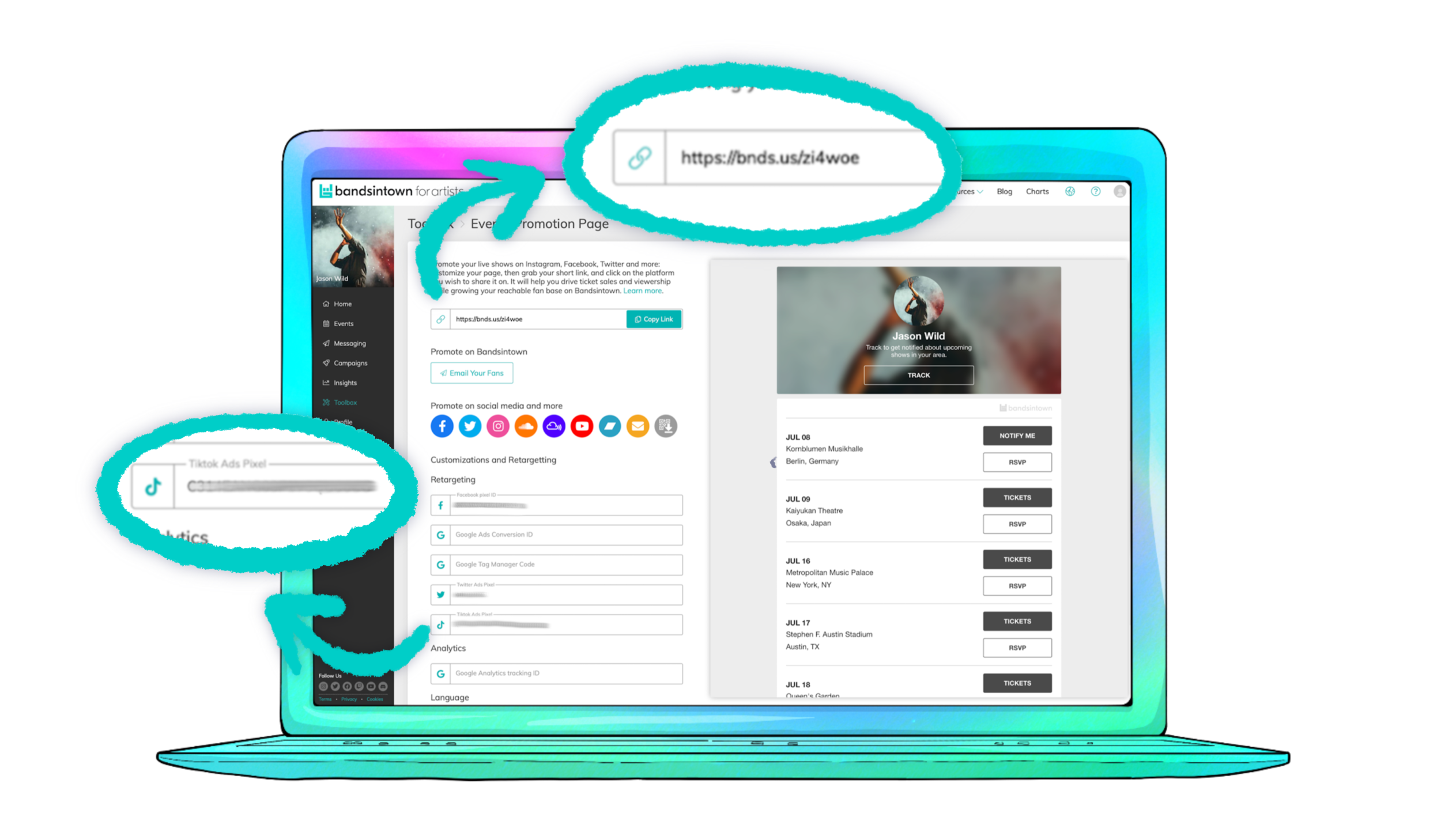What is THE tiktok PIXEL?
The TikTok Pixel is a piece of code placed on the Events Promotion Page that collects data from visitors that land on this page. This code snippet allows you to track and understand the actions users take on your Promo Page to build and target the right audience for your re-engagement strategies on TikTok.
With this pixel you’ll be able to:
Measure your ad performance and conversions based on a series of events you define, such as ‘click on a specific CTA’, no actions taken, etc.
Set an event as your optimization goal, allowing TikTok to target users who are most likely to do that action on your Promo Page (i.e. click on the ‘Tickets’ button).
Track users on your Events Promotion Page and create Custom or Lookalike Audiences based on how they engaged and where they dropped off in your funnel. These audiences can be used for remarketing.
Summary
Click on one of the topics below to learn more:
What data does the tiktok Pixel collect?
The TikTok Pixel will collect the following information from your Promo Page visitors:
ad/event information:
Information about the ad a TikTok user has clicked or an event that was triggered (i.e. Click on a specific CTA on your Promo Page).
Timestamp:
Time that the pixel event fired. This is used to determine when the Promotion Page actions took place, like when a page was viewed, when a button was clicked, etc.
IP Address:
Used to determine the geographic location of an event.
User Agent:
Used to determine the device make, model, operating system and browser information.
Creating a tiktok Pixel:
Note: These instructions assume that you already have a TikTok Ads Manager account.
Step 1
On your TikTok Ads Manager account, click on Assets on the top menu, and then click on Event.
Step 2
Once on the Events page, select the Website Pixel option.
Step 3
Click on the Create Pixel option. Name your pixel and select the option Manually install pixel code.
Adding and testing the tiktok Pixel ID on the Promotion Page:
These next steps will help you ensure the tracking pixel properly works and gathers the intended data from visitors that land on your Promotion Page.
Note: To facilitate testing, all processes are made on Google Chrome.
STEP 1
On Google Chrome, install the TikTok Pixel Helper.
STEP 2
Copy your TikTok Pixel ID from your TikTok Ads Manager account.
STEP 3
Paste the TikTok Pixel ID on the respective field on the Events Promo Page configuration page and copy your unique URL.
STEP 4
Paste the link on the Google Chrome browser tab and check that, when loading the Promo Page on a different tab, it triggers the (correct) TikTok Pixel on the TikTok Helper extension.
(The example above shows we still don’t have any events created.)
step 5
After confirming that the pixel was correctly installed, you’ll need to create events on the TikTok Events Manager to test that TikTok identifies views (visitors) and other actions taken on your Promotion Page. To test this, on your TikTok Ads Manager account, click on Assets, and then on Events.
Step 6
Once on the Events page, select the Website Pixel option.
STEP 7
Click on your TikTok Pixel to create a new event.
STEP 8
Click on Create Event, located in the middle of the screen.
step 9
Tap on the Custom Event option and choose the type of event you’d like to add so it can be tracked (i.e. Page View).
step 10
Add your Promo Page URL to the Website URL field. Select the tracking method you’d like to use (i.e. Click Events).
STEP 11
Select which predefined element of your Promo Page you’d like to track when fans click on (i.e. Track button, your photo, etc.). Simply click Save and your selection will automatically appear as a rule.
step 12
To continue the testing process, you’ll need to create a campaign. To do so, click on Campaigns and then on the Create button.
STEP 13
Choose your Advertising Objective, (i.e. drive more traffic to your Promotion Page) and click on Next.
STEP 14
Make sure you check the Use TikTok pixel to track your website box and select the pixel you’d like to link to this campaign.
STEP 15
Choose the correct event you’d like to be linked to this campaign by clicking on the Optimization Event dropdown.
STEP 16
Customize the rest of the configurations and add a credit card in order to activate your campaign. You’ll also need to determine a minimum budget (daily or lifetime) to set your campaign live. When you’re done, click on Submit.
STEP 17
Once your ad creatives are reviewed and approved, the TikTok Pixel will be activated. Click on the TikTok Pixel Helper on your Google Chrome browser to confirm it’s correctly triggering.
STEP 18
After a few minutes, you will be able to see some activity on your TikTok Ads Manager account.
Creating a tiktok Retargeting Audience
When you’re ready to set up your TikTok retargeting campaign to re-engage users that have visited your Promo Page and push them a step further, follow these steps:
STEP 1
Log in to your TikTok Ads Manager and click on Assets and then on Audience.
STEP 2
Click on Create Audience and choose Custom Audience. Select Website Traffic., which will allow you to reach people who visited your Promotion Page.
STEP 3
Under Include, select the type of event and time period you’d like to retrieve information from.Choose the pixel you created by clicking on the dropdown menu. Configure other rules if needed, name your audience and, when set, click on Confirm.

























